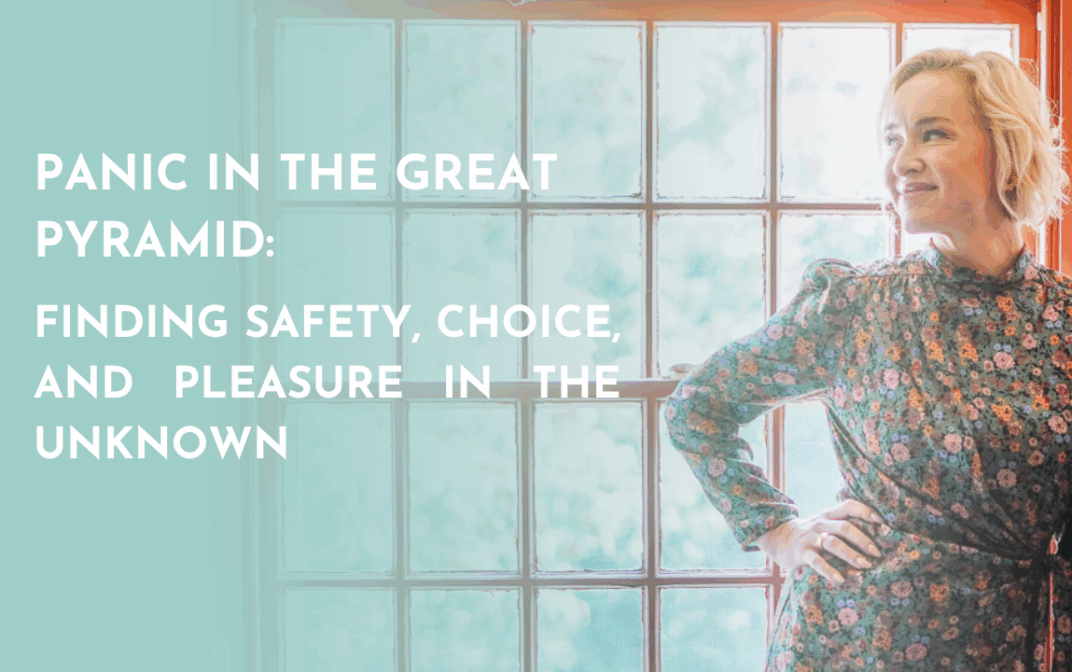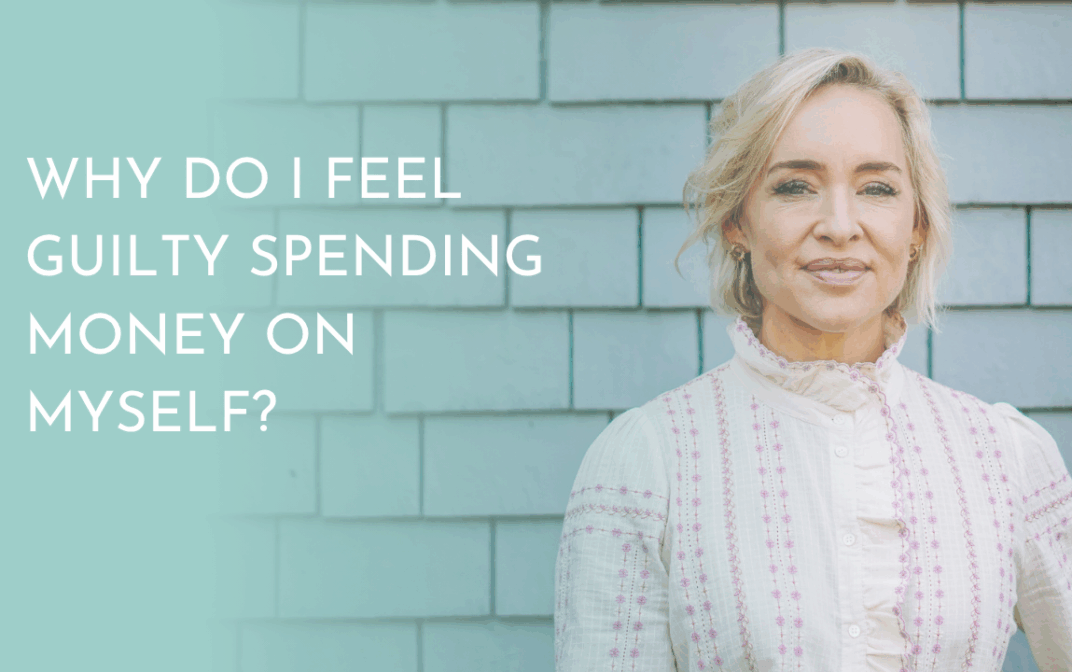How Much Money Do I Actually Need to Feel Secure?
You tell yourself you’ll feel secure when you have $10,000 saved.
Then you hit $10,000 and the goalpost moves. Now it’s $25,000.
You reach $25,000. Still don’t feel secure. Maybe $50,000 is the number.
$50,000 comes and goes. You’re already thinking about $100,000.
Meanwhile, you never actually feel secure.
No matter how much you save, there’s always a voice saying “What if it’s not enough? What if something happens? What if I lose it all?”
You’re stuck in an exhausting cycle where more money never equals more security because you have no idea what “enough” actually is.
Here’s what most people don’t understand: Financial security isn’t a number. It’s a feeling.
And that feeling doesn’t come from hitting some arbitrary savings goal. It comes from knowing your actual number, understanding what it represents, and trusting yourself to handle your finances.
Let me show you how to find your real “enough number” so you can finally stop chasing a moving target.
Why You Don’t Feel Secure (Even with Money)
Let’s start with the uncomfortable truth: Having money and feeling secure with money are completely different things.
I’ve worked with people making six figures who feel broke and people making $40k who feel abundant. The difference isn’t the amount. It’s the relationship.
Here’s why you don’t feel secure despite having money:
You’re comparing to an invisible standard. You don’t actually know what “enough” is. You’re just vaguely aware that what you have doesn’t feel like it. So you keep adding more, hoping the feeling will kick in eventually.
Your nervous system has a set point. Your body has an unconscious comfort zone for how much money feels safe. When you exceed it, anxiety kicks in to bring you back to familiar territory. More money triggers more anxiety, not less.
You never decided what the money is FOR. Security for what? Three months of expenses? Early retirement? Never working again? Without defining the purpose, there’s no way to know if you have enough.
You’re planning for catastrophe, not reality. Your brain defaults to worst-case scenarios. What if I lose my job AND get sick AND my car dies AND the economy crashes? This level of planning for disaster is why no amount ever feels sufficient.
You haven’t done the math. Most people are guessing about what they need. Without actual numbers, your brain fills in the gaps with anxiety.
The good news? All of these are fixable once you understand what “enough” actually means for you.
What “Enough” Actually Means
Let’s define terms. When we talk about financial security and “enough,” we’re really talking about three different numbers:
1. Your Survival Number This is the bare minimum you need to cover essential expenses. Rent, food, utilities, transportation, insurance. Nothing extra. This is “I can keep a roof over my head and food in my mouth” money.
2. Your Comfortable Number This includes essentials plus quality of life items. Not just food, but food you enjoy. Not just transportation, but reliable transportation. Plus some breathing room for small pleasures and unexpected expenses.
3. Your Thriving Number This includes comfortable living plus what makes your life feel full. Travel, hobbies, giving, experiences, nice things, supporting others, building wealth. This is “I’m not just surviving, I’m living.”
Most people confuse these three numbers, which is why they never feel secure.
They’re earning at the comfortable level but anxious they’ll drop to survival. Or they’re at the thriving level but can’t enjoy it because they don’t trust it’s sustainable.
Your “enough number” is the amount of money that allows you to live at your comfortable level without constant anxiety.
Not forever. Not for every possible catastrophe. But for a reasonable period of time if income stopped or decreased.
That’s it. That’s what we’re calculating.
The Actually Helpful Way to Calculate Your Enough Number
Forget the generic advice about having 3-6 months of expenses saved. That might be right for you or completely wrong. Here’s how to find YOUR number:
Step 1: Know Your Monthly Survival Number
List every essential expense:
- Housing (rent/mortgage, property tax, insurance)
- Utilities (electric, gas, water, internet, phone)
- Food (groceries, not restaurants)
- Transportation (car payment, insurance, gas, public transit)
- Healthcare (insurance premiums, regular medications)
- Debt minimum payments (if you have debt)
Add it up. This is your bare minimum monthly number.
Example: $2,800/month
Step 2: Know Your Monthly Comfortable Number
Take your survival number and add:
- Quality of life improvements (better food, reliable car maintenance)
- Small pleasures (coffee out, streaming services, occasional meals out)
- Personal care basics (haircuts, basic self-care)
- Breathing room (for small unexpected expenses)
This number should feel livable, not deprived.
Example: $3,800/month
Step 3: Decide Your Security Timeframe
How long do you want to be able to cover your comfortable expenses if income stopped?
Common timeframes:
- 3 months: Minimum cushion for job transitions
- 6 months: Standard cushion fund recommendation
- 12 months: Extended security for business owners, single-income households, or those with health concerns
- 24+ months: Early retirement, major life transitions, extended sabbaticals
Pick the timeframe that actually addresses your specific anxiety.
If you’re terrified of job loss, maybe 6 months isn’t enough for you. Maybe you need 9 or 12 to actually feel secure. That’s okay. This is personal.
Example decision: 8 months (because that’s realistically how long it would take me to find a new job in my field)
Step 4: Calculate Your Enough Number
Monthly Comfortable Number × Your Timeframe = Your Enough Number
Example: $3,800 × 8 months = $30,400
That’s your enough number. That’s your target emergency fund.
Once you have this amount saved, you have achieved baseline financial security for your chosen timeframe.
Step 5: Adjust for Your Reality
Your enough number might need to be higher if:
- You’re self-employed (income is less predictable)
- You have dependents
- You have health conditions requiring ongoing care
- You live in a high cost of living area with fewer job options
- Your industry is volatile
Your enough number might be fine at the lower end if:
- You have dual income in your household
- You have strong family support who could help in emergency
- Your skills are highly in-demand
- You have multiple income streams
- You have minimal fixed expenses
Be honest about your actual situation, not the situation you wish you had.
Beyond Cushion Funds: The Complete Security Picture
Your enough number is just one piece of financial security. Here’s the complete picture:
Cushion Fund (Your Enough Number) 3-12 months of comfortable expenses in a high-yield savings account. This is your “life happens” money.
Sinking Funds Separate savings for irregular but predictable expenses:
- Car repairs/replacement ($100-200/month)
- Home repairs ($50-100/month)
- Healthcare deductibles ($50-100/month)
- Annual expenses (insurance, subscriptions, gifts)
Retirement Savings Money you won’t touch for decades. Generally aim for 15-20% of income going here once you have your emergency fund established.
Debt Elimination High-interest debt actively works against your security. Prioritizing paying this off is part of building true security.
Income Resilience Security isn’t just about saved money. It’s also about your ability to generate income. Investing in your skills, maintaining your network, and having income options all contribute to security.
Insurance Health, life (if you have dependents), disability (if you’re the primary earner), renters/homeowners. Insurance is what keeps a crisis from becoming a catastrophe.
All of these together create real financial security.
Not just one big savings number. But a system of protection, planning, and preparedness.
Why Your Number Might Be Different Than “The Experts” Say
Financial advice often pushes one-size-fits-all rules. But your enough number is deeply personal.
You might need MORE than the standard advice if:
You have high anxiety around money. If three months of savings doesn’t help you sleep at night, that’s information. Your nervous system needs more cushion to feel safe. That’s not wrong or excessive. That’s self-awareness.
Your income is variable. If you’re self-employed, work seasonally, or depend on commissions, you need a bigger buffer for the inevitable income fluctuations.
You have health considerations. Chronic conditions, disabilities, or ongoing healthcare needs mean your baseline expenses are higher and less negotiable.
You’re in a life transition. Career changes, divorce, new parenthood, caring for aging parents. Transitions require more cushion.
You might need LESS than the standard advice if:
You have significant income security. Tenured professors, government employees with strong protections, or those with guaranteed income streams can usually get by with smaller emergency funds.
You have strong support systems. If you know family would help in an emergency or you have backup housing options, you don’t need to fund for absolute worst case.
You have minimal fixed expenses. If you have low overhead and flexibility in your lifestyle, you need less to feel secure.
The point is: Stop trying to hit someone else’s number. Find yours.
The Security Beyond Numbers
Here’s where financial advice often stops, but it’s where real security actually begins:
True financial security isn’t just about having money saved. It’s about trusting yourself to handle whatever comes.
You can have $100,000 saved and still feel insecure if you don’t trust yourself to:
- Make good decisions with money
- Rebuild if you lose it
- Handle emergencies calmly
- Generate income when needed
- Not sabotage yourself
Building this trust requires:
Financial competence. Knowing how to manage money, make a spending plan, pay off debt, invest wisely. Competence creates confidence.
Emotional regulation. Being able to look at your finances without spiraling into panic. Staying grounded when challenges arise.
Self-knowledge. Understanding your money patterns, triggers, and tendencies so you can work with them instead of against them.
Experience. Having gone through financial challenges before and survived them. Each time you handle something hard, you prove to yourself you can.
This internal security is what allows you to feel safe even when external circumstances are uncertain.
Numbers alone will never give you this.
How to Actually Feel Secure (Once You Have Your Number)
Okay, so you’ve calculated your enough number. You’ve saved it. Now what?
Because here’s what usually happens: You hit your number and still don’t feel secure. The goalposts move again.
Here’s how to actually feel the security you’ve created:
Name your number out loud. “My enough number is $X. When I have this amount saved, I am financially secure for X months.”
Celebrate when you reach it. Actually acknowledge this achievement. You created security for yourself. That matters.
Practice not moving the goalpost. When you hit your number and immediately think “But what if I need more?” pause. Recognize this is your anxiety talking, not reality.
Separate security money from growth money. Once you have your emergency fund, additional savings can go toward other goals (retirement, investments, experiences). This helps your brain recognize “I have enough for security, now I’m building wealth.”
Use regulation practices. When anxiety says “It’s not enough,” that’s a nervous system response, not a math problem. Use breathwork, grounding, or other regulation tools.
Review annually. Your enough number will change as your life changes. Review it yearly and adjust if needed. But not monthly. Not when you’re anxious.
Remember: Security isn’t about having enough money to never need to work again or to survive every possible catastrophe.
Security is about having enough cushion to handle normal life disruptions without losing your home or going into debt.
That’s achievable. That’s reasonable. And once you have it, you can actually relax.
What to Do When You Can’t Hit Your Number Yet
What if you calculate your enough number and realize you’re nowhere close?
First, breathe. You’re not broken. You’re just starting from a different place.
Here’s what to do:
Start with one month. If six months feels impossible, start with one. One month of comfortable expenses saved is massive progress from zero.
Build incrementally. Add $500, then $1,000, then $2,000. Each milestone increases your security and proves to your nervous system that accumulation is possible.
Address income if needed. If you can barely cover expenses, the issue might not be overspending. It might be underearning. Can you ask for a raise? Take on side work? Develop a new skill?
Look at expenses honestly. Are there places where money is leaking that don’t align with your values? Subscriptions you don’t use? Expenses that don’t bring joy?
Get support. Working with a financial coach, therapist, or supportive community can help you build your enough number faster and with less anxiety.
Remember: Any amount saved is better than none.
Even $500 in savings changes your options when life happens.
You’re not behind. You’re exactly where you are, and you’re taking steps forward. That’s what matters.
The Freedom That Comes from Knowing Your Number
Once you know your enough number and you’re working toward it (or have reached it), something shifts:
You can make decisions from choice, not fear. Should you take this job? Stay in this relationship? Move to this city? When you know you have X months of security, you can think clearly instead of just reacting from panic.
You can take calculated risks. Want to start a business? Go back to school? Take a sabbatical? Your enough number tells you if you can afford to try.
You can enjoy your money. When you know your security needs are covered, spending on pleasure doesn’t trigger guilt. You know the difference between your security money and your living money.
You can be generous. When you trust your own security, you can help others without resentment or fear.
You can sleep at night. No more 3am anxiety spirals about “What if?” You know what if. You’ve planned for it.
You stop comparing. Other people’s numbers don’t matter. You know your number, and that’s enough.
This isn’t about being rich. It’s about knowing exactly what security means for you and either having it or actively building toward it.
That clarity alone will change your relationship with money.
Calculate Your Enough Number and Build Real Security
If you’re ready to stop guessing what “enough” means and start building actual financial security, I’ve created a free resource for you.
The Money Reset is a free audio journey that will help you understand what true security means—and how to create it.
Inside this audio experience, you’ll discover:
- Why your money nervous system keeps moving the goalpost
- How to identify what “enough” actually means for you
- How to stop the cycle of anxiety even when you have savings
- How to start building wealth that feels secure, not stressful
Stop chasing a moving target.
Know your number. Build your security. Actually feel the peace you’ve been working toward.
Because financial security isn’t about having infinite money.
It’s about having enough for your actual life and trusting yourself to handle the rest.
Kate Northrup is the bestselling author of Money: A Love Story and Do Less. She teaches thousands of students how to find their personal enough number and build financial security that actually feels secure in her program Relaxed Money.






0 comments